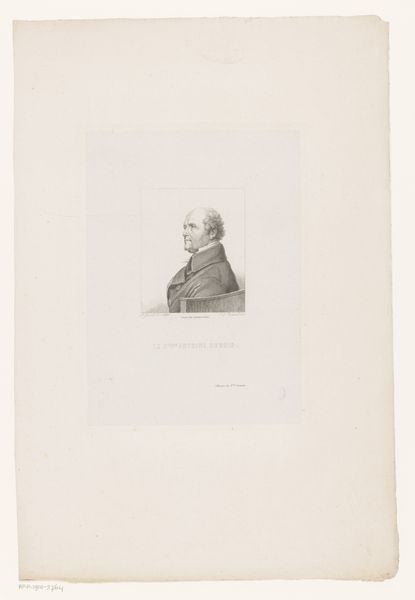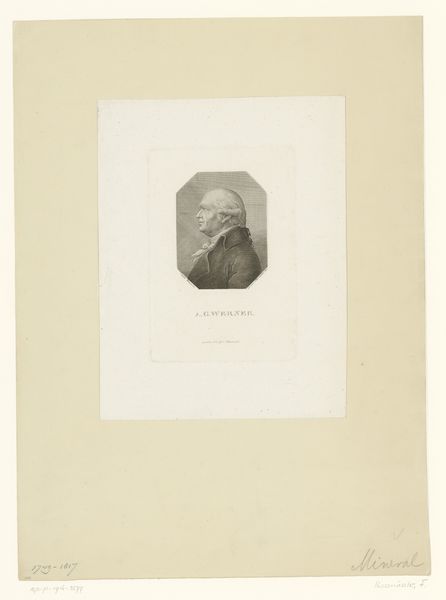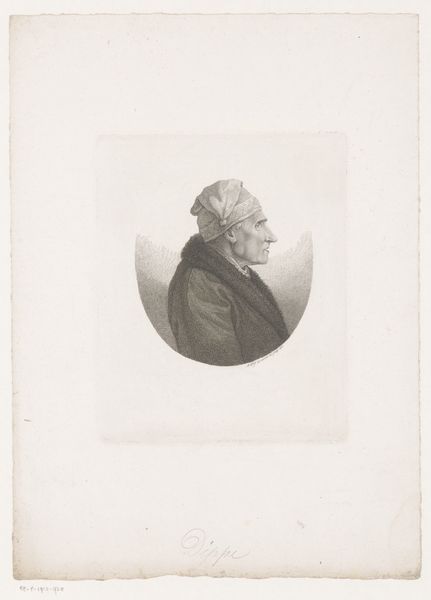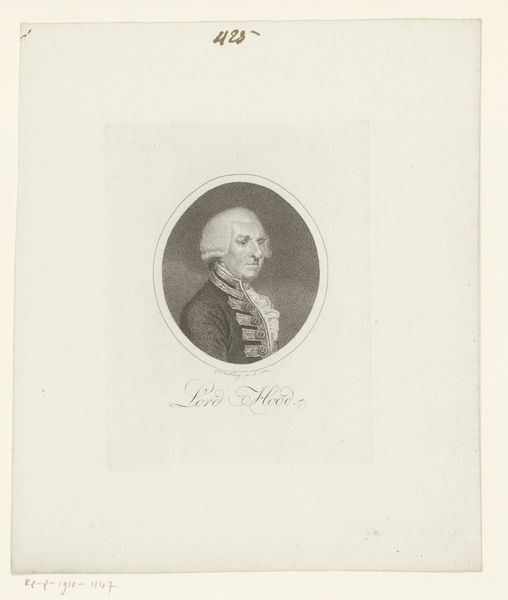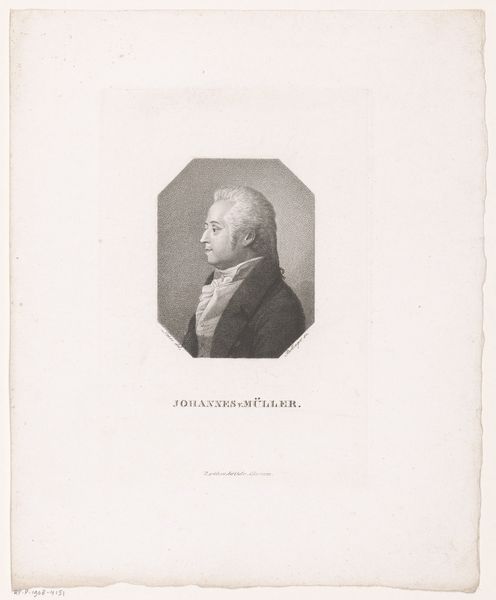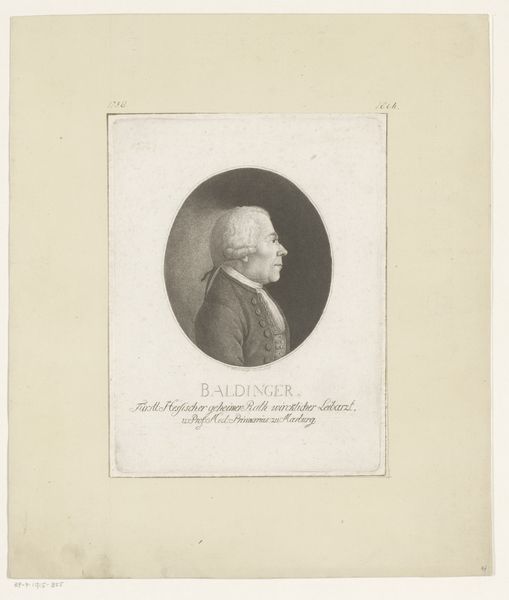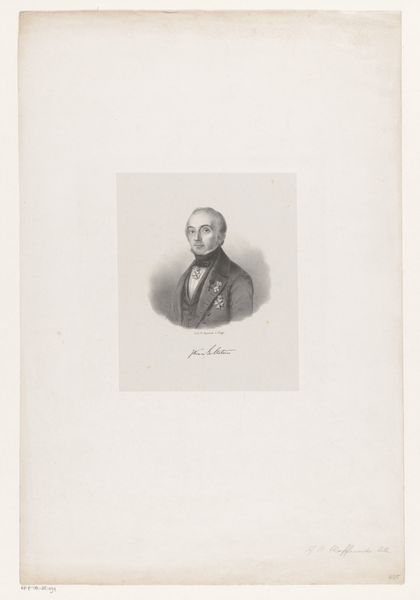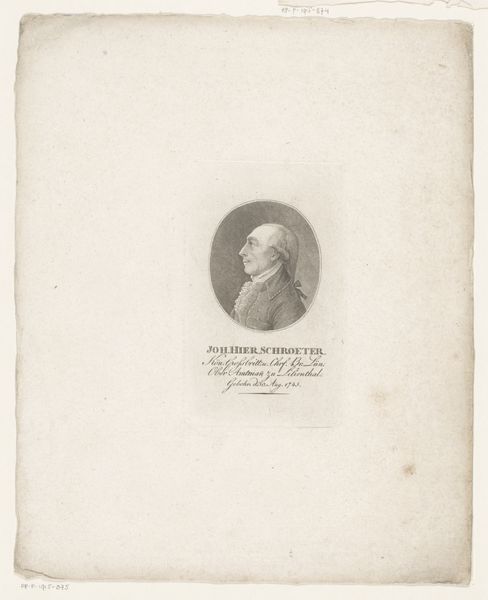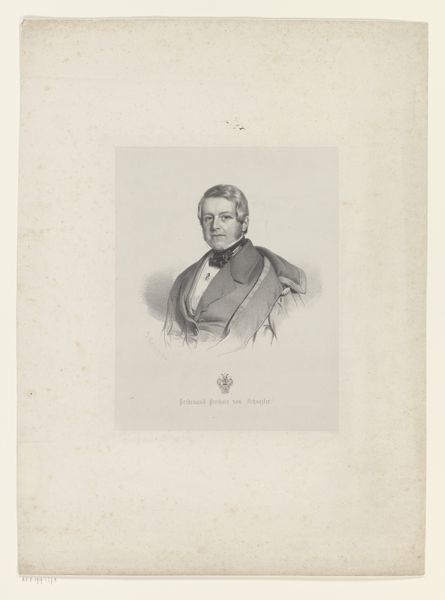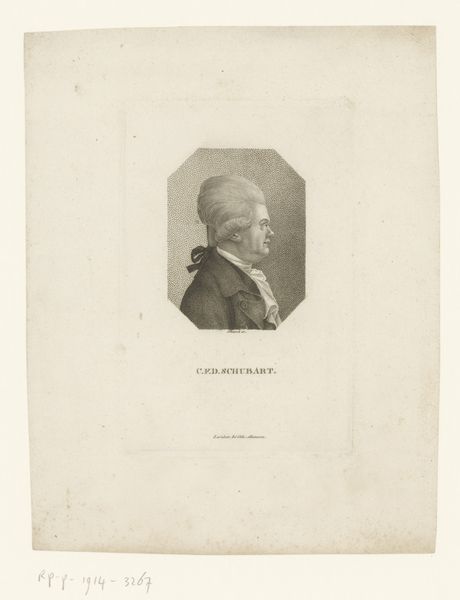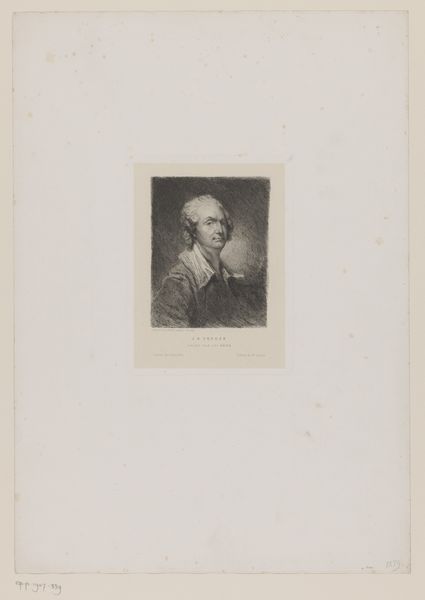
print, engraving
#
portrait
# print
#
line
#
engraving
#
realism
Dimensions: height 173 mm, width 110 mm
Copyright: Rijks Museum: Open Domain
Curator: I find the stark lines and shading quite powerful in this portrait of Henri Grégoire, created by Léopold Flameng sometime between 1841 and 1910. It is an engraving, a traditional printmaking method lending itself well to replicating portraits for wider distribution. Editor: The man has a stern look—the tight-lipped composure tells a story of restraint and seriousness. The work reminds me of a historical document frozen in time. One feels the weighty context of a certain era. Curator: Exactly, Léopold Flameng excelled at this form, creating a likeness intended not just for visual appreciation, but as a piece of political messaging. You see the tools—the engraving medium lending itself to widespread reproduction for didactic purpose. Editor: Right! We must consider Grégoire's background, of course. As a staunch abolitionist and advocate for Jewish emancipation during the French Revolution, this portrait exists in a tumultuous time marked by radical social and political upheaval. This image functions as a carefully crafted statement, a reminder of his ideals during the late nineteenth century when nationalistic fervor intensified. Curator: The medium reflects this very well. Engravings create precise detail; observe how each line is etched to define form. It shows the time involved; prints were a meticulous labor of love, but, at the same time, were replicable—scalable, really—that made imagery available to many who were often excluded from access to high art. Editor: And Flameng certainly was conscious of Grégoire's public image—presenting him as an austere intellectual, a champion of social reform and religious tolerance, while implicitly advocating for these beliefs in a rapidly changing world. It serves not merely as a portrait but as a beacon to ignite a spark of activism in the beholder. Curator: That's right, there are so many socio-historical influences behind this very powerful image; paying attention to the labor process as well as production and replication offers fresh insights into the artwork. Editor: Precisely! By recognizing its intended political work, it opens further understanding regarding art and social change in a given time. We unveil layers and can think of social justice.
Comments
No comments
Be the first to comment and join the conversation on the ultimate creative platform.
